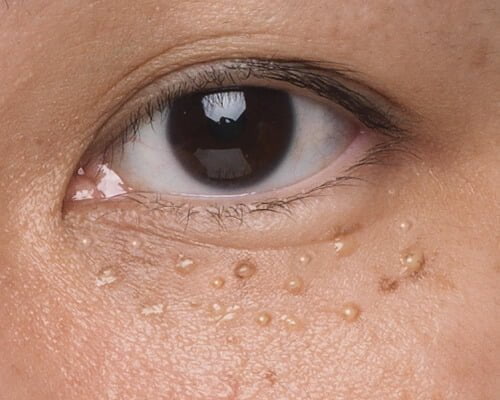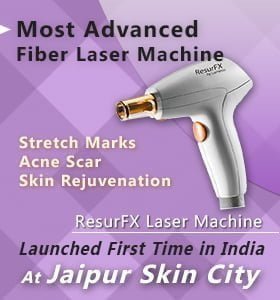Read and find out how to remove milia on the face and how to prevent it. Milia is the medical term for small, keratin-filled cysts that can be seen in all age groups. These cysts can be solitary (milium) or appear in clusters (milia). Milia can happen to just about anyone — regardless of age or skin type — but are more prevalent in those with chronically sun-damaged skin. They are commonly found on the face, especially the nose, cheeks, and around the eyes.

What is milia?
Milia are small, yellowish bumps that can appear on the skin of the face. These are unsightly in appearance and are caused by trapped dead skin cells. There are several methods that you can use to prevent milia from appearing on your face.
What Causes Milia on Face?
Wondering what causes milia on your face? Milia form as a consequence of the skin’s localized inability to exfoliate naturally. Dead skin cells—composed predominantly of keratin, a protein also found in hair and nails—build up underneath, causing a bump to form. It may appear when there’s skin trauma (i.e. burns, blisters, etc.), or after use of certain topical medication. They are more commonly found in conjunction with certain skin conditions, such as rosacea and dandruff, or certain other skin conditions. Genetics is another deciding factor for Milia.
They do not get inflamed or develop redness or swelling.
How to Remove Milia on Face
Milia do not need to be treated unless they are a cause for concern for the patient. They often clear up by themselves within a few months. Where possible, further trauma should be minimized to reduce the development of new lesions. The best plan of action is to visit the dermatologist in Jaipur to get the right opinion about the Milia Removal Treatment.
Don’t pick, poke, or try to remove Milia on Face
This is the first and foremost advice given by the dermatologist. Pocking or picking is not going to do any good for Milia’s treatment. Applying too much pressure while doing so will cause skin damage and leave a scar. If a cut is formed then there are chances of infection.
Cleanse the area
clean the area with mild soap. Gently wash and pat the skin dry. This will keep the area clean.
Steam opens your pores
An additional step to open the pores is to give them steam for at least 5 minutes. repeat this once or twice a week.
Medications
medicines such as topical retinoids (creams that contain vitamin A compounds) can help you in treatment. But the best is to meet the dermatologist to know your proper dosage and any care required for it.
Exfoliation
Products that boost exfoliation and cell turnover keep the skin smooth and thin, thereby eradicating milia and preventing them from recurring. Ask your dermatologist for recommendations.
Extraction
For those who simply can’t wait the number of weeks required for topical exfoliating treatments to work their magic, manual extraction by your dermatologist can provide a quicker solution. A sterile needle or blade is used initially to create a small opening in the cyst. Afterward, the bump can either be left alone to spontaneously decompress with routine cleansing or exfoliating, or extraction using a comedones extractor can be done to remove the cyst manually by gentle pressure. In skilled hands, little trauma and no scarring should be produced.
Other procedure
Chemical peels and micro-dermabrasion have been reported to be effective when used for very extensive and resistant milia. This will exfoliate the superficial skin and thus the lesion.
How to Prevent Milia on Face
Although various factors affect milia formation, you cannot prevent everyone. But since sun damage is a significant contributor to milia formation, every morning routine must include the application of sunscreen (at least an SPF 30). Apply after cleansing and moisturizing.
With a solid routine in place that incorporates daily sun protection, gentle exfoliation at home, and in-clinic extraction as needed, your skin can be smooth, radiant, and milia-free!
Milia doesn’t cause long-term problems. If your condition doesn’t improve within a few weeks, however, you may want to follow up with your dermatologist to make sure it is not another skin condition.
Also Read: Acne Scar Treatment through Dermaroller



